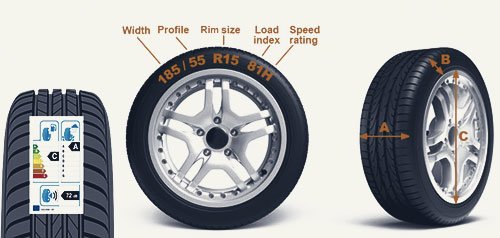How to Read Your Tyre Size: A Simple Guide
1. Tyre Width (205)
The first number, 205, refers to the width of the tyre in millimetres (mm). This is the distance across the tread of the tyre from one sidewall to the other when the tyre is fully inflated.
2. Aspect Ratio (55)
The second number, 55, is the aspect ratio, which shows the height of the tyre's sidewall as a percentage of the tyre's width. For example, 55 means the sidewall height is 55% of 205mm. A higher aspect ratio usually means a more comfortable ride, while a lower ratio offers better handling.
3. Tyre Construction (R)
The R stands for radial construction, the most common tyre structure today. Radial tyres are made with layers of cord arranged at 90-degree angles to the direction of travel.
4. Wheel Diameter (17)
The number 17 refers to the diameter of the wheel (in inches) that the tyre is designed to fit. So, this tyre fits a 16-inch wheel.
5. Load Index (91)
The 91 is the load index, which represents how much weight each tyre can safely carry. In this example, the load index of 91 means the tyre can handle a load of 615 kg per tyre.
6. Speed Rating (V)
The last letter, V, is the speed rating. This shows the maximum speed the tyre is rated to handle safely under optimal conditions. A V rating means the tyre is rated for speeds up to 149 mph (240 km/h).


